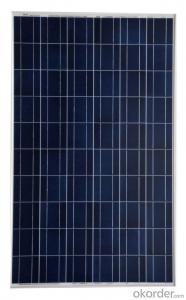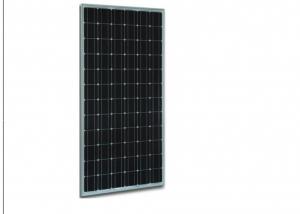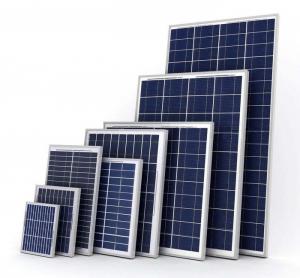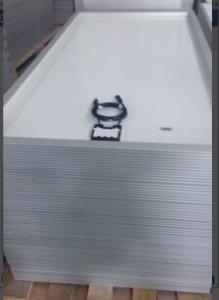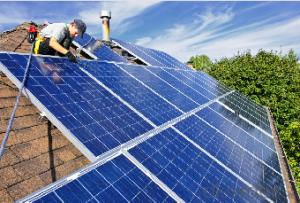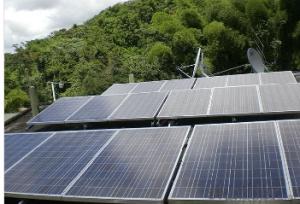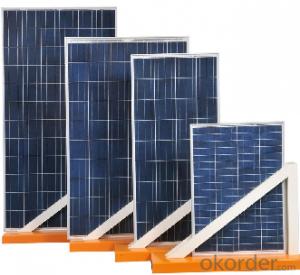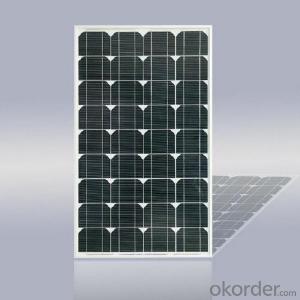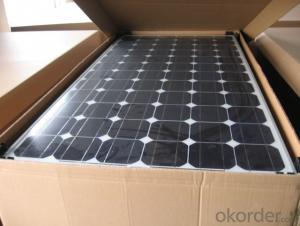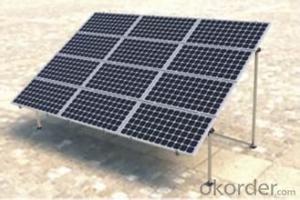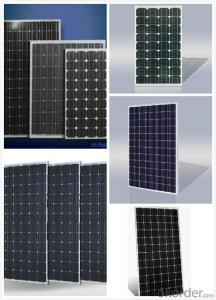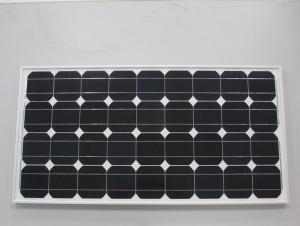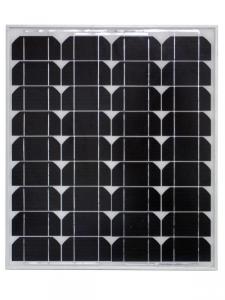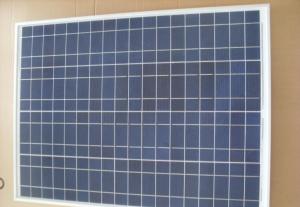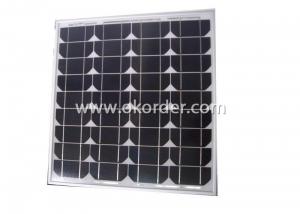Solar Panels Fort Collins - High Efficiency Solar Panel in Stoke, Solar Module Panel
- Loading Port:
- Shanghai
- Payment Terms:
- TT OR LC
- Min Order Qty:
- 2500 watt
- Supply Capability:
- 26000 watt/month
OKorder Service Pledge
OKorder Financial Service
You Might Also Like
Specification
We now provide
• Monocrystalline Solar Panel
• Polycrystalline Solar Panel( multicrystalline silicon Solar Panel)
Features of our products:
• High conversion efficiency mono/poly-crystalline amorphous silicon solar cells
• Modules incorporate high performance bypass diodes to minimize the power drop caused by shading
• High transmittance, low-iron tempered glass
• High performance EVA encapsulant to prevent destroying and water.
• AI frame: without screw, corner connection. 8 holes on the frame can be installed easily
• Good performance of preventing from atrocious weather such as wind and hails
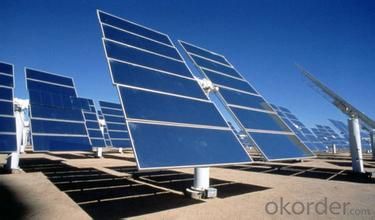

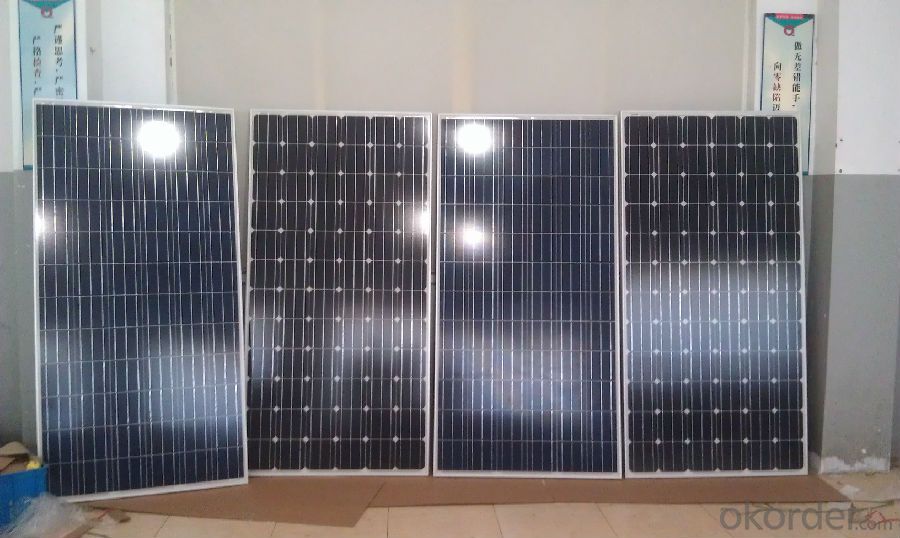
Polycrystalline Silicon Solar Modules 48Cell-195W Specification
ELECTRICAL PERFORMANCE | |||
Power output | P max | W | 195 |
Power output tolerances | ΔP max | W | 0/+5 |
Module effi ciency | η m | % | 14.7 |
Voltage at Pmax | V mpp | V | 23.7 |
Current at Pmax | I mpp | A | 8.03 |
Open-circuit voltage | V oc | V | 30.1 |
Short-circuit current | I sc | A | 8.65 |
Product Description:
This installation Manual contains essential information for the electrical and mechanical installation that your must know before installing CUSTOMER PV modules. This also contains safety information you need to be familiar with .All the information described in this manual are the intellectual property of CNBM and based on the technologies and experiences that have been acquired and accumulated in the long history of CUSTOMER. This document does not constitute a warranty, expressed or implied.
CUSTOMER does not assume responsibility and expressly disclaims liability for loss, damage, or expense arising out of in anyway connected with installation, operation, use or maintenance of the PV modules. No responsibility is assumed by CUSTOMER for any infringement of patents or other rights of third parties that may result from use of PV module.
CUSTOMER reserves the right to make changes to the product, specifications or installation manual without prior notice.
Solar panel working process
In addition to being the ultimate source of all life on earth, the sun is an infinitely renewable, completely pollution-free source of electricity. Instead of burning fossil fuels dug up from the ground in a big power plant – a very 19th century, industrial age approach, when you think about it – solar panels convert sunlight directly into electricity, with no harmful emissions.
The basic unit of a solar panel is a solar cell, which usually consists of one or two layers of silicon-based semiconductor wafers. When struck by the photons in sunlight, the solar cell generates an electrical charge due to the "photovoltaic effect" – which is a pretty good name, since it produces voltage from photons. The flow of these electrons moves in a steady electrical current from one side of the cell to the other.
Dozens of these PV cells are packaged together into solar modules, which in turn are packaged into solar panels that are mounted on a rooftop and arranged to maximize their hours of exposure to direct sunlight. Because the electricity generated by all those solar cells is direct current (DC), it is then sent to an inverter that transforms the power into the same alternating current (AC) used by the appliances in your home and the local utility electricity distribution grid. Increasingly, these inverters are getting "smart," providing data monitoring for solar installation performance and other grid integration services.
- Q: Can solar panels be used for heating water?
- Yes, solar panels can be used for heating water. Solar thermal systems or solar water heaters use solar energy to heat water by capturing sunlight and converting it into heat energy. This heat is then transferred to a fluid, which is used to heat the water in a storage tank. This sustainable and cost-effective method can be used for residential, commercial, and industrial water heating purposes.
- Q: I've found something called maximum system voltage 000v on my 0 w panel nameplate. Its impossible for 0w to have 000v, right?
- System voltage is the total across the full chain of panels, when using multiple panels in series. It's what the insulation on the panel is rated to stand, to earth/ground, without breaking down. A device could have an output rating of V and still a 000V insulation rating. eg. if your 0W panel had an open-circuit voltage of 25V, the insulation is rated to stand up to 40 panels connected in series. (40 x 25 = 000V). And actually a 0W power source could be rated at 000V, if it's current rating was only 0 milliamps. (Though extremely impractical for a solar panel unit).
- Q: will at least consider them for their home electricity? I've seen several articles that new technologies are now being used, but it doesn't seem to be promoted to residential apps. I've even seen that the solar technology will be used in paints in the near future.
- There are lot of cheap solar panels today, Its all in the internet and most of them are made in China. Expand your knowledge and learn from a renowned solar company about the Cheap Solar Panels. Visit our site and contact us today!
- Q: i have 2 questions.. I have a 6v solar panel, if i wanted to charge batteries with that it what batteries could i charge? Could charge normal AA batteries with it our do i need special batteries.2. I have a 6v solar panel that produces watt. I want to light a bulb with it but whenever i hook it up the solar panel won't light it up. I think the current of the solar panel is too low. How can i increase the current of the solar panel
- [] Use it to charge 4 pieces AA cell ( connect in series to make 5V battery pack ) for 0 to 4 hours. Good for cell rated 600mAH ,2000mAH,2500mAH. [2] Cannot increase current. Buy some more this panel and hook them together in parallel to increase current. You need at least ten pieces to make current reaches .6A to light up some 6V bulbs.
- Q: Me and my wife just saw an ad on TV about going solar and saw the money we can save every month... any here have solar panels? How much do you save every month on energy bill? Is it true that your energy meter will spin backwards? lol
- You okorder The notion of spinning a meter backward has a lot of people plugging in their solar panel via an inverter- but this is a very bad idea and illegal as well- the power company requires a lockout device they control to kill power in their powlines for servicing and repairs- a plugged in solar panel and inverter can cause them injury or death. If you have about 30,000 dollars to invest (cost will vary), and you are going to be staying in your home for at least 0 years, contact your electric power utility as they will have the progams in place to do the installation on your site, and install the needed equipment for you to be legally grid tied. They will also have your paperwork prepared for your tax person come tax time. Most are actually seeking people out to do this, I won't go into details why, but by listening carefully to the power company in their presentation they will indirectly tell you why. Any installation that is intended to be grid tied MUST be approved by the power company and meet their specifications. Too many people are ignoring this last detail.
- Q: Are you a Solar Panel Specialist/Genius/Enthusiast?
- No, just an amateur. I guess that could be called an Enthusiast. I think most people find the topic somewhat interesting, some more than others. Why do you ask?
- Q: I am doing a science fair project on solar panels, and I need four solar panels to conduct the experiment. I would only need the solar panels for a week. What type of solar panel should I get?
- Solar okorder
- Q: I was just wondering what the minimum and maximm charging voltage and ampere is for li ion batteries. If i connect a solar panel, which only gets enough sunshine to generate voltage, will that still charge the battery, or would i have to series connect solar panels until they together reach 3,7volt?
- One lithium cell requires 4.2V to obtain its full charge, Never exceed 4.2V ! Output from solar panel if below 3.7V , nothing charge to lithium. Total charging time until the cell is full depending on the AH rate of cell and the charging current that solar panel can be provided. Suppose cell is rate 5AH, and the charging current from solar panel under full sun shine can maintain 0.5A ( use solar panel short circuit current rate from its specification as a reference ) , hence, 0 hours is enough. And be sure the solar panel can maintain 4.2V output at 0.5A . Remember, over charge lithium cell one time might reduce its life into half . Therefore, let the solar panel output passing through a precision regulator to maintain output is 4.2V is the best way, because, as cell reaches 4.2V , no more charging current is forced into cell ( automatic stop charging ). If you do not have the knowledge to make this simple variable voltage regulator with LM37K ( if you choose this way, buy solar panel output has at least 2V) , you may choose to do it manually by install a current meter and a variable resistor in series between the panel output to cell. By adjust the value of resistor, charging current can be controlled ( if you choose this way, buy solar panel output has as less as 6V ). Count the charging time with a clock and adjust the charging current from time to time to maintain 0.5A .
- Q: i've heard environmentalists like ed begley jr use the phrase quot;peak shaving hourswhen talking about solar energy.what does that phrase mean, please?thank you to all who respond.
- Graminoids are among the most versatile life forms. They became widespread toward the end of the Cretaceous period, and fossilized dinosaur dung (coprolites) have been found containing phytoliths of a variety that include grasses that are related to modern rice and bamboo. Grasses have adapted to conditions in lush rain forests, dry deserts, cold mountains and even intertidal habitats, and are now the most widespread plant type; grass is a valuable source of food and energy for all sorts of wildlife and organics. Graminoids are the dominant vegetation in many habitats, including grassland, salt-marsh, reedswamp and steppes. They also occur as a smaller part of the vegetation in almost every other terrestrial habitat. There are some 3,500 species of graminoids. Many types of animals eat grass as their main source of food, and are called graminivores – these include cattle, sheep, horses, rabbits and many invertebrates, such as grasshoppers and the caterpillars of many brown butterflies. Grasses are also eaten by omnivorous or even occasionally by primarily carnivorous animals. In the study of ecological communities, herbaceous plants are divided into graminoids and forbs, which are herbaceous dicotyledons, mostly with broad leaves.
- Q: Due to erratic power cuts in my area I want to make up by using a 30watt solar panel. My decoder is 30watt but my TV is 70W. I need something small. I don't have problem with sound. Just picture.
- Do what we do when power is cut (although we have very reliable power - we loose as much as 2 hours a year), is go Amish. That is go without powered technology. Now, for you, you need more than a solar panel (and likely more than 30W, but that is a start) - you need a battery or set of batteries to store the collected power. 20Ah might do. You need an inverter to power things. For that, likely a 300W will do. For a TV, go shopping, and look at the labels on the back of the TVs. I just bought a 24 TV rated at 40W. If you get a 9 LED TV, it may be likely you can run that directly from battery, for many have separate DC brick supplies. With those, you can make a cable to power it directly from a 2V or so battery, if the supply can make 2 to 5V. Depending on your provider, you may be able to get a mini-decoder which uses a separate brick or wall supply, which means the decoder likely can be directly battery powered. Such a decoder may draw less than 20W.
Send your message to us
Solar Panels Fort Collins - High Efficiency Solar Panel in Stoke, Solar Module Panel
- Loading Port:
- Shanghai
- Payment Terms:
- TT OR LC
- Min Order Qty:
- 2500 watt
- Supply Capability:
- 26000 watt/month
OKorder Service Pledge
OKorder Financial Service
Similar products
Hot products
Hot Searches
Related keywords
